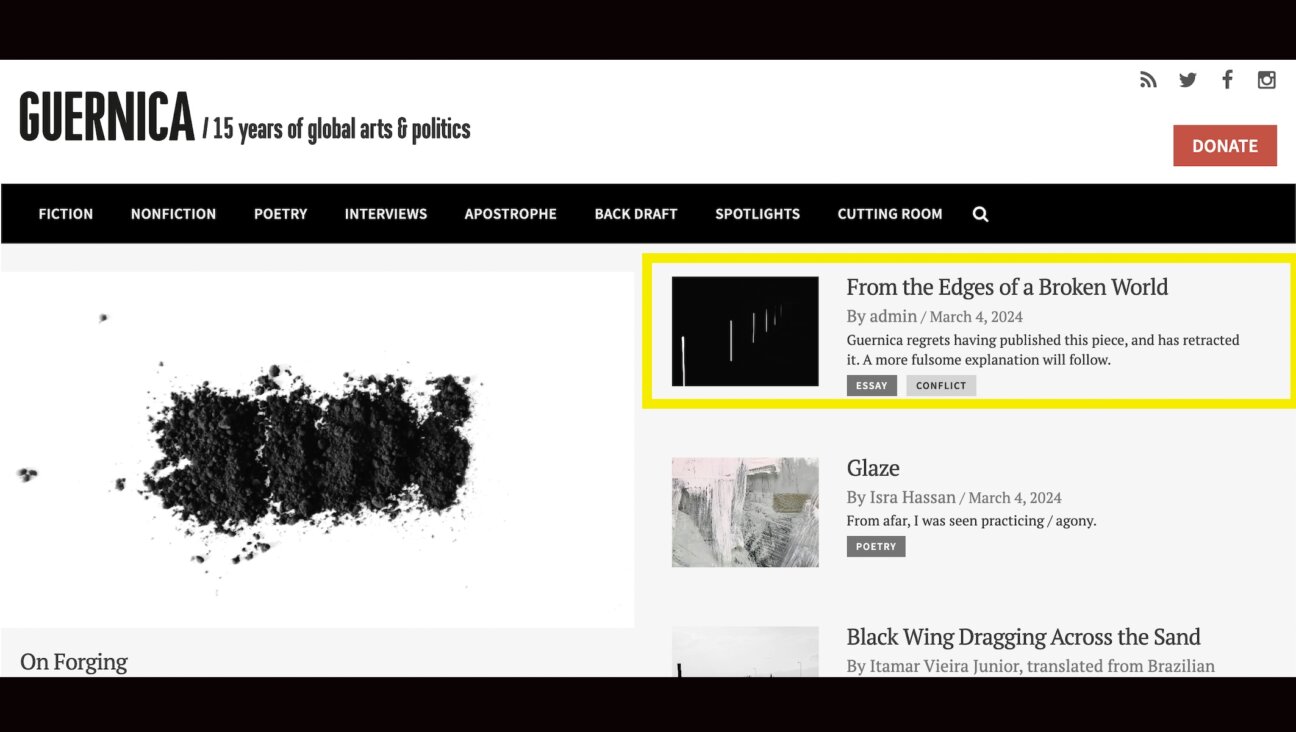Searching for Impermanence

Image by Miya Ando

Image by Miya Ando
Ando is descended from a family who made samurai swords. Now, fittingly, she makes most of her works out of metal. She has developed a custom technique for dyeing aluminum, and the square and rectangular pieces she creates invoke Rothko paintings with their simple yet dramatic use of color and texture. One of the most stunning pieces in the show is a kimono – made to the same exact size and shape specification of a true Japanese kimono – made out of small squares of this dyed metal and hung from the ceiling.
[1]: Link: http://miyaando.com/
Visiting Ando’s studio, in a loft building in DUMBO, gives you a sense of her complicated background. The studio is of course full of her own work, but there’s also a small Buddhist shrine and a photograph of her paternal grandmother. Though Ando (who grew up between Japan and southern California) doesn’t identify as Jewish, she says that the faith – as well as her relationships with relatives on her dad’s side of the family – has been a big influence. Being in New York, with its thriving and active Jewish community, has also inspired her work. The first piece that got her a lot of publicity was a sculpture made from metal pieces salvaged from the Ground Zero wreckage. The sculpture was commissioned to honor the 67 Brits who died on 9/11 and is displayed in London. She followed that up with another large public work, this time in Tokyo, commemorating the devastating Japanese tsunami and earthquakes in 2011.
“I like to work with metal,” she explained to me in her studio. “I like to make it look like nature, like a cloud, like water.” The pieces in “Impermanence” do just that – though they’re created from man-made metals, they look soft and natural and pick up light from every angle. Her work has been called “post-minimalist,” and after seeing several dozen small multicolored squares of metal on the wall I can see why. But after a longer look, they begin to look like mirrors – they reflect multiple generations, multiple identities, and, eventually, Miya Ando’s smiling eyes.

I hope you appreciated this article. Before you go, I’d like to ask you to please support the Forward’s award-winning journalism this Passover.
In this age of misinformation, our work is needed like never before. We report on the news that matters most to American Jews, driven by truth, not ideology.
At a time when newsrooms are closing or cutting back, the Forward has removed its paywall. That means for the first time in our 126-year history, Forward journalism is free to everyone, everywhere. With an ongoing war, rising antisemitism, and a flood of disinformation that may affect the upcoming election, we believe that free and open access to Jewish journalism is imperative.
Readers like you make it all possible. Right now, we’re in the middle of our Passover Pledge Drive and we need 500 people to step up and make a gift to sustain our trustworthy, independent journalism.
Make a gift of any size and become a Forward member today. You’ll support our mission to tell the American Jewish story fully and fairly.
— Rachel Fishman Feddersen, Publisher and CEO
Join our mission to tell the Jewish story fully and fairly.
Our Goal: 500 gifts during our Passover Pledge Drive!
























